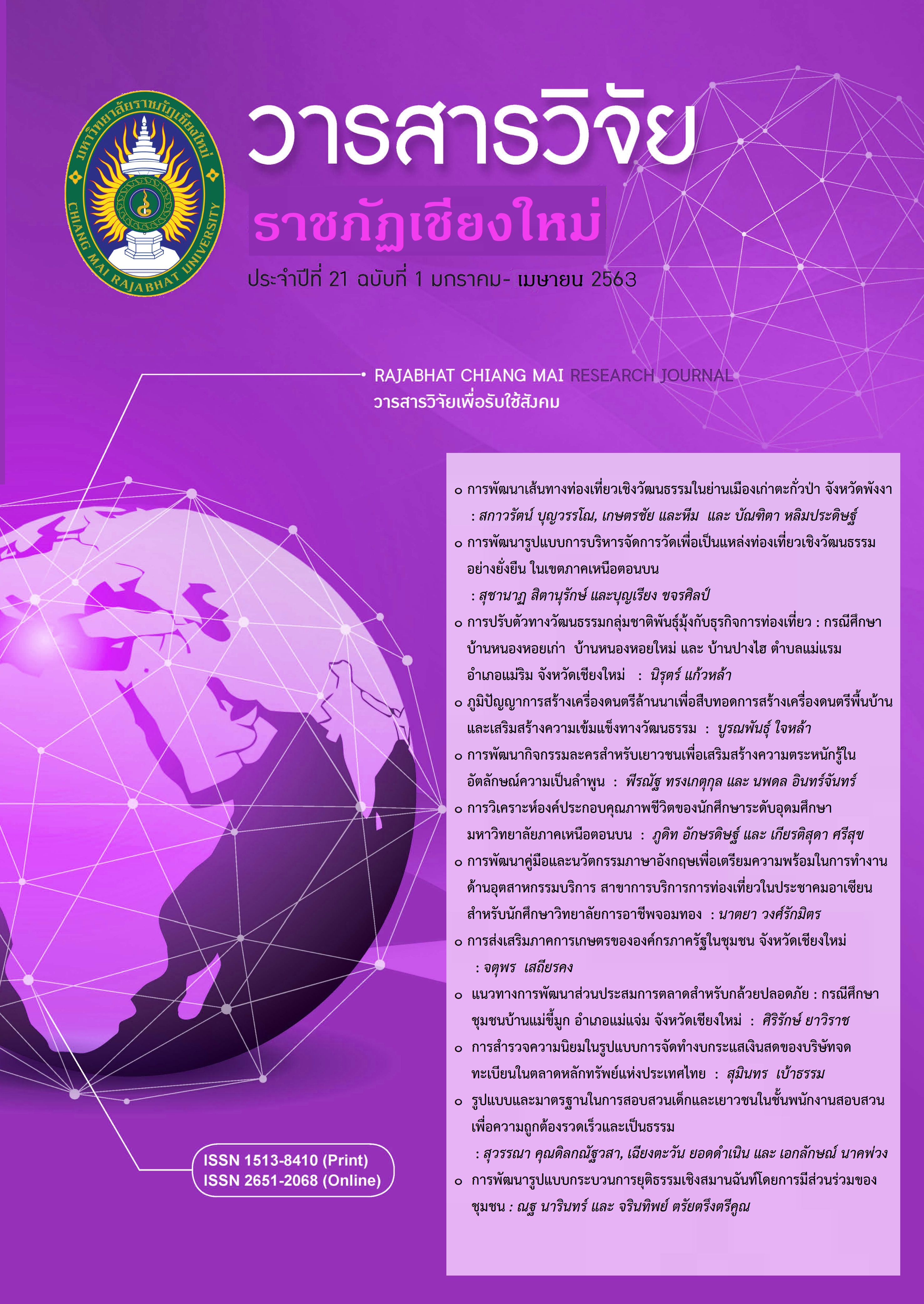Popularity Survey in Cash Flow Statement Format in Thai Listed Companies
DOI:
https://doi.org/10.14456/rcmrj.2020.223589Keywords:
Cash flow statement from operating activities, Thai listed companiesAbstract
This research aims to 1) check list the method of preparing statements of cash flow from operating activities of Thai listed companies, for the period ended 2017 and 2) to explore by questionnaires the reasons for selecting the method of preparing statements of cash flow from operating activities of Thai listed companies, for the period ended 2017. The results found that 1) determined by check list that companies prepared the statements of cash flow from operating activities by the indirect method rather than the direct method. It also found that 8 industry groups prepared statements of cash flow from operating activities by the indirect method rather than the direct method and 2) exploring by questionnaires found that companies prepared the statements of cash flow from operating activities by the indirect method rather than the direct method. The reason that they selected statements of cash flow from operating activities by the indirect method is because it is consistent when compared to the prior year, to find the difference between net income and cash from operations, and to know cash paid/received from suppliers/customers. This Information is beneficial to the Accounting Standards Committee considering the format of the cash flows from operating activities.
Downloads
References
ตลาดหลักทรัพย์แห่งประเทศไทย. (2560). ข้อมูลบริษัทจดทะเบียน. สืบค้นจาก https://www.set.or.th/th/company/companylist.html
Aaker, D.A., Kumar, V. and Day, G.S. (2001). Market Research, New York: John Wiley & Sons.
Abu-Abbas, B. M. (2014). Direct, Indirect, or Both Methods of Reporting Operating Statement of Cash Flows. International Journal of Finance and Accounting, 3(6), 335-340.
Bradbury, M. (2011). Direct or Indirect Cash Flow Statements?. Australian Accounting Review, 21(2), 124-130.
Brahmasrene, T., Strupeck, C. D., and Whitten D. (2004). Examining Preferences in Cash Flow Statement Format. The CPA Journal, 24(10), 58-60.
Ding, Y., Jeanjean, T., and Stolowy, H. (2006). The Usefulness of Disclosing both Direct and Indirect Cash Flows: An Empirical Study. Presented at the Workshop Comptabilite-Audit-Publication. IAE Paris, March 10, 2006.
Foster, T., McNelis, L. K., and Smith, W. L. (2012). The Statement of Cash Flows: An Indirect to Direct Conversion Tool to Enhance User Understanding and Analysis. Journal of Accounting and Finance, 12(2), 94-119.
Hardan, A. S., Qabajeh, M. A., and Alshanti, A. M. (2016). The Preference of Direct or Indirect Methods in Preparing the Statement of Cash Flows in Decision Making: An Academic Perfective. International Journal of Economics and Finance, 8(2), 206-214.
Lu, M., Shan, Y., Wright, S., and Yu, Y. (2018). Operating Cash Flow Asymmetric Timeliness in Australia. Accounting & Finance. 1-41.
Wallace, R.S., Olusegun., Choudhury, Mohammed S.I., and Pendlebury, M. (1997). Cash flow Statements: An International Comparison of Regulatory Positions. The International Journal of Accounting, 32(1), 1-22.
Downloads
Published
How to Cite
Issue
Section
License
1. Articles, information, content, images, etc published in the “Community and Social Development Journal” are copyrighted by the Community and Social Development Journal, Chiang Mai Rajabhat University. In order to properly distribute the articles through print and electronic media, the authors still hold the copyright for the published articles under the Creative Commons Attribution (CC BY) license, which allows the re-distribution of the articles in other sources. References must be made to the articles in the journal. The authors are responsible for requesting permission to reproduce copyrighted content from other sources.
2. The content of the articles appearing in the journal is the direct responsibility of the article authors. The editorial board of the journal does not necessarily agree with or share any responsibility.














